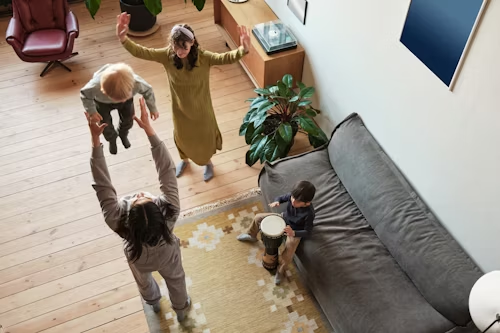Introduction to Interior Basement Waterproofing
Imagine waking up after a night of heavy rain only to find your basement floor soaked, boxes of memories ruined, and a musty smell taking over the house. This nightmare is exactly what interior basement AquaBoss Waterproofing helps prevent. It’s the process of protecting your basement from the inside by creating a barrier that stops water from seeping in through walls, floors, and joints.
Why Basement Waterproofing Is Essential for Every Home
Your basement is like the foundation’s front line in the battle against water. Without protection, moisture can slowly weaken concrete, promote mold growth, and even lower your property value. Waterproofing ensures that your basement remains dry, healthy, and usable.
Difference Between Interior and Exterior Waterproofing
While exterior waterproofing stops water before it reaches your walls, interior waterproofing handles water that has already entered or is pushing through from the outside. Think of it as an inside defense shield — perfect for homes where exterior excavation isn’t practical.
How Interior Basement Waterproofing Works
This process combines sealing entry points, installing drainage systems, and redirecting water away from your home. Whether it’s coating the walls with waterproof materials or adding a sump pump, the goal is to stop water in its tracks before it causes damage.
Common Causes of Basement Water Problems
Poor Drainage Systems
If gutters overflow or downspouts are too close to the house, water will pool around the foundation and find its way inside.
Hydrostatic Pressure Buildup
When groundwater levels rise, pressure builds up around your basement walls, forcing water in through cracks and seams.
Foundation Cracks
Even small hairline cracks can act like tiny doorways for moisture.
Plumbing Leaks
Leaky pipes or water heaters can mimic groundwater problems, soaking your basement floor from within.
Early Warning Signs You Need Interior Waterproofing
- Damp Walls – If your basement walls feel cool and clammy, water is seeping in.
- Musty Odors – A persistent smell of mold means excess moisture is trapped inside.
- Water Stains – Brown or yellow marks on walls indicate past leaks.
- Efflorescence – White, chalky residue on brick or concrete is a sign of water movement.
- Mold Growth – Dark spots or fuzzy patches mean moisture is more than just a nuisance.
Step-by-Step Interior Basement Waterproofing Process
- Inspection and Assessment – Identify the source and severity of the problem.
- Cleaning and Preparation – Remove debris, old coatings, and damaged materials.
- Crack Repairs and Sealing – Use epoxy or hydraulic cement to close gaps.
- Installing a Drainage System – French drains or drain tiles redirect water.
- Applying Waterproof Coatings – Paint walls with waterproof sealants to block moisture.
Popular Methods for Interior Waterproofing
- Sealants and Coatings – Great for minor leaks and dampness.
- Interior Drain Tile Systems – Channels water to a sump pump.
- Sump Pump Installation – Pumps water away from the foundation.
- Vapor Barriers – Prevent moisture from penetrating walls.
Tools and Materials Needed for DIY Waterproofing
Buckets, brushes, rollers, waterproof paint, epoxy sealants, drainage pipes, sump pump kits, safety gloves, and a moisture meter.
When to Call a Professional Instead of DIY
If water is entering in large volumes, structural cracks are visible, or you’ve tried DIY solutions without success, it’s time to call an expert.
Costs Involved in Interior Basement Waterproofing
Expect to spend anywhere from $1,000 for simple sealing to over $10,000 for a full drainage system with sump pump installation, depending on the basement size and severity of the problem.
Mistakes to Avoid During Basement Waterproofing
- Ignoring the source of water
- Skipping wall preparation before sealing
- Using the wrong type of sealant
- Not addressing drainage issues outside the home
How to Maintain a Waterproof Basement Long-Term
- Keep gutters clean
- Extend downspouts away from the house
- Inspect sump pumps regularly
- Watch for new cracks or leaks
Benefits Beyond Water Protection
Waterproofing not only keeps your basement dry but also improves air quality, prevents structural damage, and increases your home’s usable space and value.
Conclusion
Interior basement AquaBoss Waterproofing is like giving your home an invisible shield against one of nature’s most destructive forces — water. Whether you go the DIY route for small issues or hire professionals for major problems, taking action early will save you from expensive repairs and health hazards in the long run.

